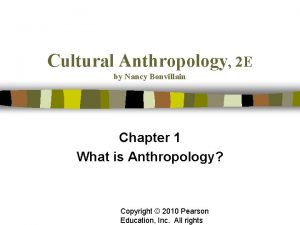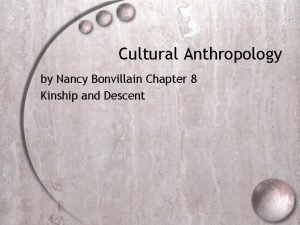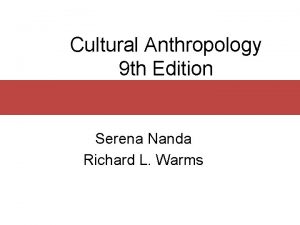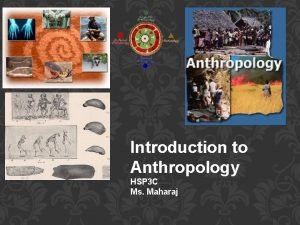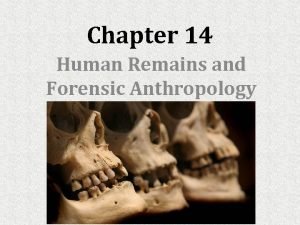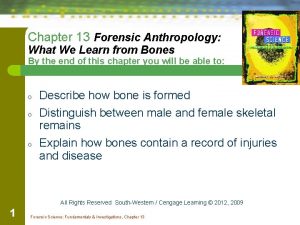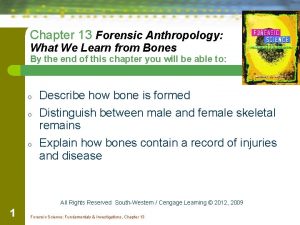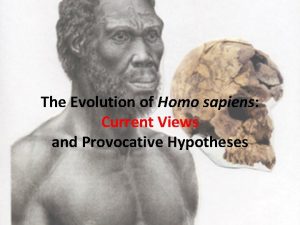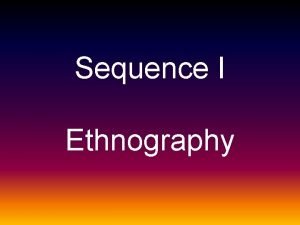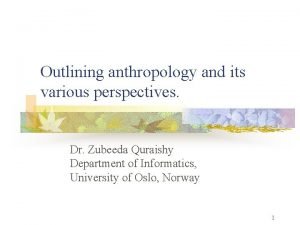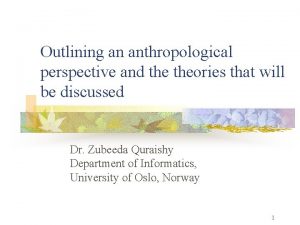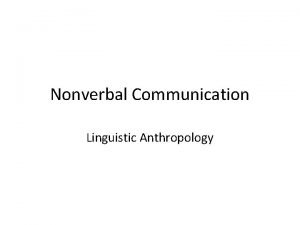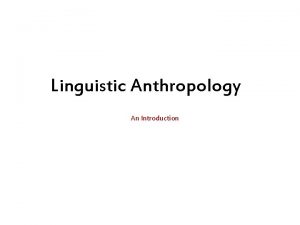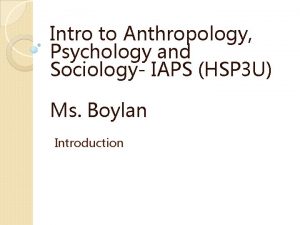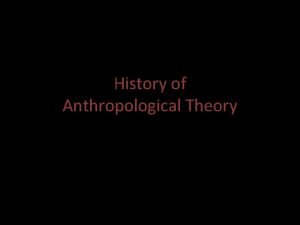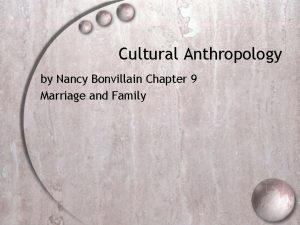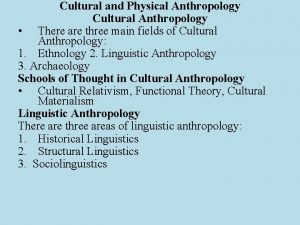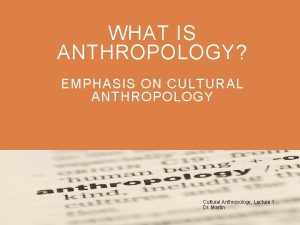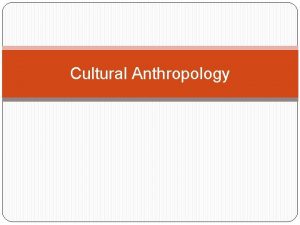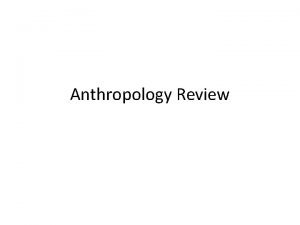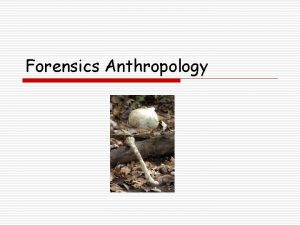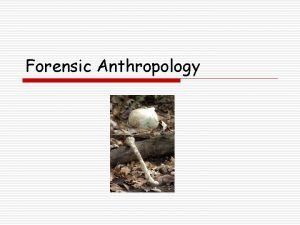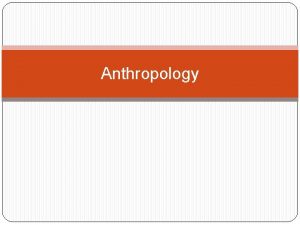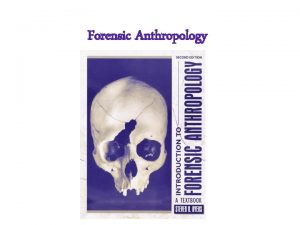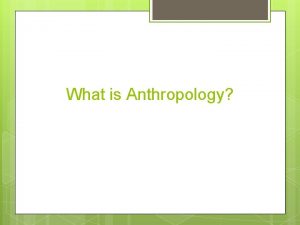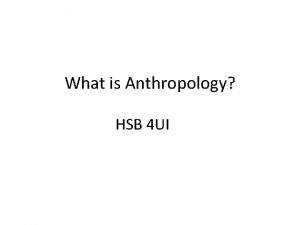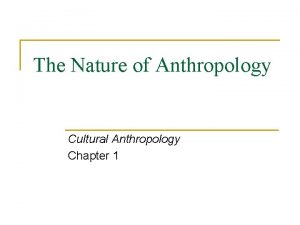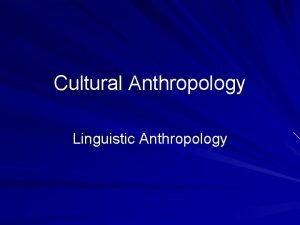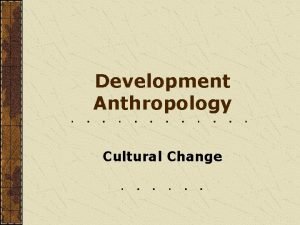Cultural Anthropology 2 E by Nancy Bonvillain Chapter

Cultural Anthropology, 2 E by Nancy Bonvillain Chapter 1 What is Anthropology? Copyright © 2010 Pearson Education, Inc. All rights

Key Distinguishing Features n. A focus on the concept of culture n. A comparative perspective n. A holistic perspective Copyright © 2010 Pearson Education, Inc. All rights

The Concept of Culture The learned values, beliefs, and rules of conduct shared to some extent by the members of a society that govern their behavior with one another Symbolic Culture Material Culture Copyright © 2010 Pearson Education, Inc. All rights

The Concept of Culture n Symbolic culture: People’s ideas and means of communicating those ideas. n Material culture: The tools, utensils, clothing, housing, and other objects that people make or use. Copyright © 2010 Pearson Education, Inc. All rights

A Holistic Perspective A perspective that views culture as an integrated whole, no part of which can be completely understood without considering the whole. Considers the interconnections among factors that contribute to people’s behavior. Copyright © 2010 Pearson Education, Inc. All rights

A Comparative Perspective n Universals vs. Diversity Anthropologists collect data in many societies to document the diversity of human culture and to understand common patterns. n Culture Change Cultures are not static: they change in response to internal and external pressures. n Globalization concerns the spread of economic, political, and cultural influences across a large geographic area or many different societies. Copyright © 2010 Pearson Education, Inc. All rights

The Four Subfields of Anthropology n Cultural Anthropology n Linguistic Anthropology n Archaeology n Biological Anthropology Copyright © 2010 Pearson Education, Inc. All rights

Figure 1. 1 (p. 6) Subfields of Anthropology Copyright © 2010 Pearson Education, Inc. All rights

Cultural Anthropology n The Study of Human Culture n Ethnography n Ethnology n Cultural Relativity/Ethnocentrism Copyright © 2010 Pearson Education, Inc. All rights

Linguistic Anthropology n Interconnection of Language, Culture, and Society n Indigenous Languages n Historical Linguistics Copyright © 2010 Pearson Education, Inc. All rights

Archaeology n The Study of Material Culture n Historic n Prehistoric n Applied Copyright © 2010 Pearson Education, Inc. All rights

Biological Anthropology n The Study of Human Origins and Contemporary Biological Diversity n Paleoanthropology – Evolution – Primatology – Human variation n Medical Anthropology Copyright © 2010 Pearson Education, Inc. All rights

Applied Anthropology n The application of the techniques and theories of anthropology to solving real-world problems. n Includes the fields of: – Forensic anthropology – Cultural resource management (CRM) – Contract Archaeology Copyright © 2010 Pearson Education, Inc. All rights

Forensic Anthropology n Employs biological anthropologists who analyze human remains in the service of: – Criminal justice – Families of disaster victims Copyright © 2010 Pearson Education, Inc. All rights

Cultural Resource Management (CRM) n The application of archaeology to preserve and protect historic structures and prehistoric sites. Copyright © 2010 Pearson Education, Inc. All rights

Contract Archaeology n The application of archaeology to: – Assess the potential impact of construction on archaeological sites – Salvage archaeological evidence Copyright © 2010 Pearson Education, Inc. All rights

Table 1. 1 a (p. 7) Career Opportunities in the Four Subfields of Anthropology (continued on next slide) Copyright © 2010 Pearson Education, Inc. All rights

Table 1. 1 b (p. 7) Career Opportunities in the Four Subfields of Anthropology (continued from the previous slide) Copyright © 2010 Pearson Education, Inc. All rights
- Slides: 18
